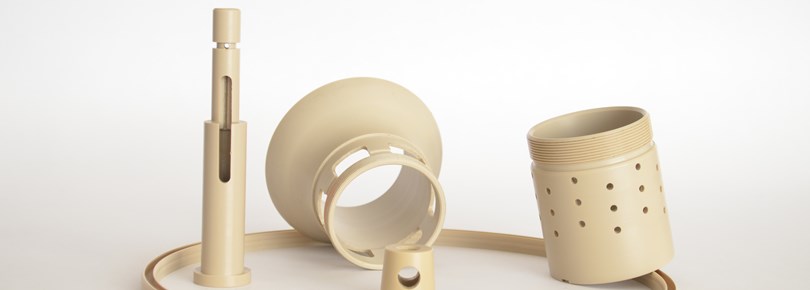A guide to Machining PEEK
August 2021

Because of its robustness and versatility, PEEK is used to fabricate items used in demanding applications, including bearings, piston parts, pumps, HPLC columns and compressor plate valves. It is also extensively used in the Medical & Pharmaceutical, Aerospace and Chemical Processing industries, with applications ranging from implants to lightweight aircraft components.
PEEK is a semicrystalline thermoplastic with excellent mechanical properties providing enough elasticity to be machined to custom designs with good resistance to fatigue and stress cracking.
PEEK is a strong, flame retardant and abrasion-resistant thermoplastic with high impact strength and a low coefficient of friction. It is highly resistant to thermal degradation as well as attack by both organic and aqueous environments and is known for retaining its mechanical properties, even at elevated temperatures.
Stress-relieving before machining PEEK through the annealing process is beneficial to remove the stress that could potentially result in cracking, wearing, poor chemical resistance, or degradation of the material performance. Although PEEK has good resistance to stress cracking it can occur from the heat generated during the machining process.
If the component is likely to undergo long stretches of machining time it is beneficial to include additional annealing steps to assure that critically tight tolerances and flatness are achieved.
Silicon carbide cutting tools are a good choice for Virgin PEEK, while diamond tools work well for PEEK that has been reinforced with carbon fibre.
Used in hostile environments, PEEK is a high strength alternative to ferrous materials. It exhibits very low smoke and toxic gas emissions whilst carrying a V-0 flammability rating.
PEEK is perfect for use in FDA food applications.
To find out how we can help your latest project contact team@fluorocarbon.co.uk










